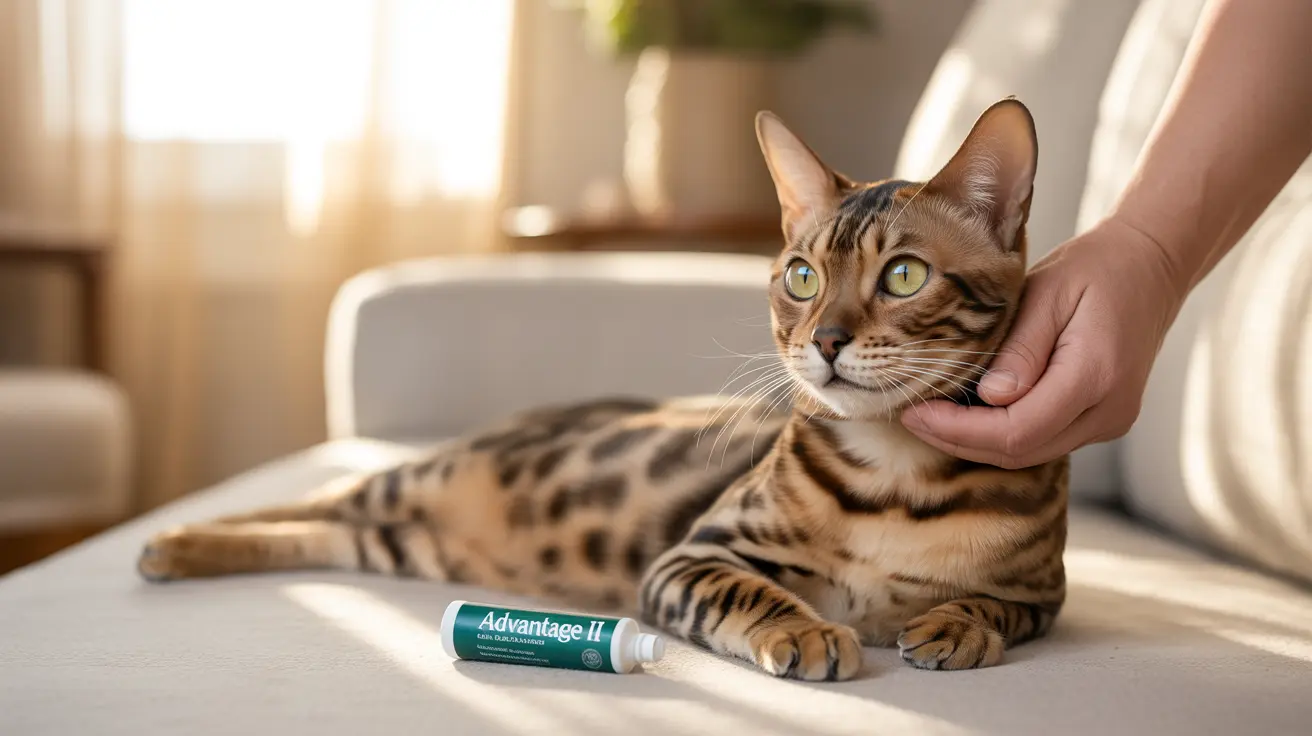When it comes to protecting your feline friend from fleas, many pet owners wonder about the safety and effectiveness of Advantage II. As a widely trusted flea treatment, Advantage II has established itself as a go-to solution for cat owners, but understanding its safety profile is crucial for responsible pet care.
In this comprehensive guide, we'll explore everything you need to know about Advantage II's safety for cats, including its active ingredients, proper usage, and potential side effects. We'll also provide expert insights to help you make an informed decision about this popular flea treatment.
Understanding How Advantage II Works
Advantage II combines two powerful active ingredients: imidacloprid and pyriproxyfen. Imidacloprid targets and eliminates adult fleas through contact, while pyriproxyfen acts as an insect growth regulator, preventing flea eggs and larvae from developing into adults.
The treatment begins working within 12 hours of application and continues providing protection for up to 30 days. Unlike some other flea treatments, fleas don't need to bite your cat for the medication to be effective, making it a safer option for flea-allergic cats.
Safety Profile and Important Considerations
Advantage II is FDA-approved and considered safe for cats and kittens over 8 weeks old and weighing more than 2 pounds. The treatment is specifically formulated for felines, with precise dosing based on your cat's weight to ensure maximum safety and effectiveness.
While generally well-tolerated, some cats may experience mild side effects, including:
- Temporary skin irritation at the application site
- Brief periods of increased grooming behavior
- Mild drooling if the product is licked
- Occasional lethargy or agitation
Proper Application Methods
Correct application is crucial for both safety and effectiveness. Here's how to properly apply Advantage II:
- Part your cat's fur at the base of the skull
- Apply the entire contents directly to the skin
- Avoid touching the treated area until it's completely dry
- Keep cats separated if you have multiple pets in the household
The application site is specifically chosen to prevent your cat from licking the product, reducing the risk of potential side effects.
When to Exercise Caution
While Advantage II is safe for most cats, certain situations require extra consideration:
- Cats under 8 weeks of age or 2 pounds in weight
- Pregnant or nursing cats
- Elderly or sick cats
- Cats with known sensitivities to the ingredients
- Cats with open wounds or skin conditions
Frequently Asked Questions
Is Advantage II safe for cats, and are there any side effects I should watch for?
Yes, Advantage II is safe for cats when used as directed. Common side effects include temporary skin irritation at the application site, minor grooming changes, and occasional drooling. Serious reactions are rare but should be reported to your veterinarian immediately.
How does Advantage II for cats work to kill fleas at all life stages?
Advantage II uses imidacloprid to kill adult fleas on contact and pyriproxyfen to prevent flea eggs and larvae from developing. This dual-action approach breaks the flea life cycle, providing comprehensive protection.
How quickly does Advantage II start working after application on my cat?
Advantage II begins killing fleas within 12 hours of application. It can eliminate newly-arriving fleas within 2 hours and provides continuous protection for up to 30 days.
How should I apply Advantage II to my cat to ensure safety and effectiveness?
Apply the entire contents of one dose to the skin at the base of your cat's skull, where they cannot lick it. Ensure your cat is dry before application and remains dry for 24 hours afterward.
Can I use Advantage II on kittens, and are there any weight or age restrictions?
Advantage II is safe for kittens over 8 weeks old and weighing more than 2 pounds. Do not use it on younger or smaller kittens, as safety hasn't been established for these age groups.
The Bottom Line
Advantage II stands as a safe and effective flea treatment option for cats when used according to instructions. While mild side effects can occur, the benefits of protecting your cat from flea-related health issues typically outweigh the risks. Always consult with your veterinarian if you have specific concerns about your cat's flea treatment needs.






